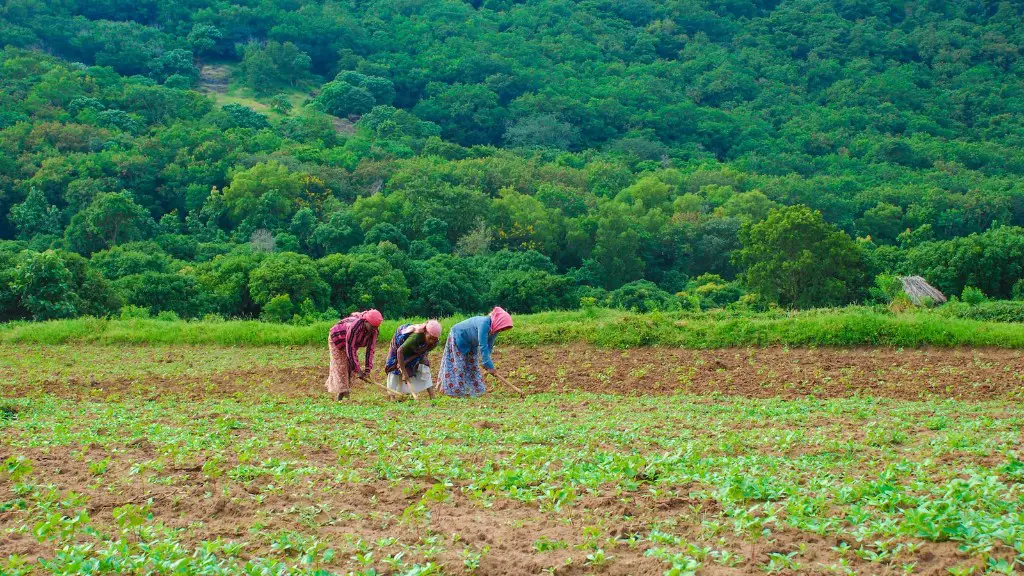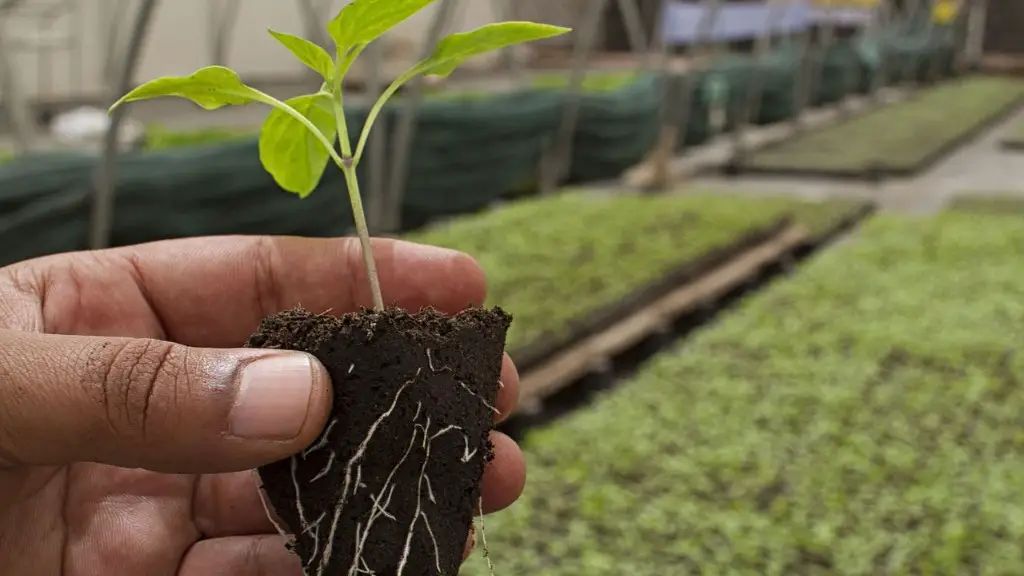Land tenure refers to the set of rules, customs, and traditions that govern the use and ownership of land. In agriculture, land tenure often includes access to water resources, grazing rights, and other natural resources. In many parts of the world, land tenure is closely linked to social status and economic power.
land tenure in agriculture refers to the rights and responsibilities associated with the use and management of land for agricultural purposes. It includes both the legal rights of farmers and other land users to access and use land, as well as the social and economic customs and traditions that regulate how land is used and managed.
What is tenure in farming?
Farmland tenure refers to the institutions governing the control and use of farmland. These institutions can shape many farm decisions, including those related to production, conservation, and succession planning. Farmland tenure can also affect the overall stability and health of the agricultural sector.
In common law systems, land tenure is the legal regime in which land owned by an individual is possessed by someone else who is said to “hold” the land, based on an agreement between both individuals. It determines who can use land, for how long and under what conditions.
Why is land tenure an important concept
It is essential that land rights are perpetuated in order to ensure land tenure security. The duration of property rights is especially important in agriculture, as landholders will not invest in their land if they are unsure if they will benefit from these investments. By ensuring that land rights are perpetuated, we can give landholders the security they need to make long-term investments in their land.
Land tenure is an important issue in many parts of the world, especially in rural areas where land is a major source of livelihood. tenure security contributes to rural people’s willingness and ability to invest in agriculture and sustainable land management – and to benefit from its proceeds.
There are many benefits to having secure land tenure, including poverty eradication, food security and nutrition. tenure security allows people to invest in their land, and to benefit from the fruits of their labor. In addition, tenure security can help to ensure that land is used in a sustainable way, which is important for the long-term health of the land and the people who depend on it.
There are various ways to achieve tenure security, including through government programs, private initiatives, or a combination of both. What is important is that people have the opportunity to obtain tenure security, so that they can benefit from the many advantages it brings.
What are the 3 types of land tenure?
Land tenure institutions are the rules and regulations that govern how land is used and accessed. There are four main types of land tenure institutions: customary land tenure, private ownership, tenancy, and state ownership. These institutions exist in different economic contexts, such as feudalism, traditional communalism, market economies, and socialism. each type of land tenure institution has its own advantages and disadvantages.
There are six different types of land tenure, each with their own advantages and disadvantages. Owner cultivation is the most common type of land tenure, and is often the most efficient. However, squatting on public or private land can be a good way to get access to land without having to pay for it. Large estates or latifundia can be very productive, but can also be very exploitative. Feudal tenures with bound and unbound labor can be very oppressive, but can also provide some security for tenants. Communal tenures can be very egalitarian, but can also lead to conflict. Smallholder leasing from private landowners can be a good way to get access to land, but can also be very expensive.
What is land tenure simplified?
There are a number of different types of land tenure systems in existence around the world. The type of system that exists in a particular area is often determined by historical factors, such as the colonial history of the area.
In some cases, land tenure is determined by custom and tradition. In others, it may be regulated by law. Land tenure systems can be classified into two broad categories: private and communal.
Private land tenure refers to situations where an individual or a group of individuals has exclusive rights to land and its resources. This may be the result of ownership, lease, or other contractual arrangement.
Communal land tenure, on the other hand, refers to situations where a community as a whole has rights to land and its resources. This is often the case in indigenous communities where land is held communally.
Land tenure is an important issue because it affects people’s access to land and its resources. It also affects the way land is used and managed. Land tenure reform is often seen as a way to improve access to land and its resources, as well as to promote more sustainable land management practices.
The land tenure system is the system by which land is owned and controlled. It affects agricultural land use and prospects for improvement. The type of land tenure system in a country affects the way land is used and how it can be improved. There are three main types of land tenure systems: private, communal, and state.
Private land tenure system is where land is owned by individuals or companies. The land can be bought and sold on the open market. The land is usually well-managed and productive. However, some people may not have access to land, or the land may be under-utilized.
Communal land tenure system is where land is owned by the community. The land is usually managed by a village council or another community body. The land is used for the benefit of the community. This type of tenure can help to prevent land from being sold on the open market.
State land tenure system is where land is owned by the government. The government may lease the land to individuals or companies. The government may also manage the land itself. State-owned land is usually well-managed and productive.
What is the problem of land tenure
Tenure refers to the legal rights and restrictions that apply to the use and occupancy of land. tenure systems vary considerably between different countries and regions, and can have a significant impact on how natural resources are used and managed.
Sadly, the role that tenure plays in natural resources allocation and exploitation is often ignored in public land policy. This is despite the fact that land tenure issues can contribute to deforestation, degradation of the environment, lowering of carrying capacities of soils, poaching and extinction of wild biotic resources.
It is important that policy makers take tenure into account when making decisions about land use and management. Only by doing so can we hope to sustainably manage our natural resources and protect our environment for future generations.
Land tenure is the system by which land is held, used, and managed. It includes property rights but also use rights of a permanent or a seasonal nature. With land tenure we restrict the meaning to rights related to land, their origin and their operation. A tenure system may include rights sanctioned by law, and rights sanctioned by custom.
What are the two types of land tenure?
The customary land tenure system is the one that is most commonly used in Ghana. Under this system, land is either owned by the community as a whole or by families. Land can be used by anyone in the community or family, but it cannot be sold or leased to someone outside the community or family. The leasehold system is the one that is used by the government. Land under this system can be leased to anyone, including foreigners.
The Freehold tenure system is the most common type of land ownership in the world. Individuals who subscribe to the Freehold tenure system pay a predetermined amount for the right to own a plot of land. The land is then passed down to the individual’s heirs upon their death.
The Inheritance tenure system is similar to the Freehold tenure system, except that the land is not passed down to the individual’s heirs upon their death. Instead, the land is transferred to the communal ownership of the community in which the individual lives.
The Communal Land Tenure system is prevalent in many parts of the world, particularly in Africa. Under this system, the land is owned communally by the members of the community, and individuals are allotted a plot of land to use for their lifetime. Upon their death, the land is returned to the communal ownership.
The Leasehold tenure system is commonly used for commercial and industrial properties. Under this system, an individual or company leases a plot of land from the owner for a predetermined period of time. After the lease expires, the land is returned to the owner.
The Gift tenure system is used when an individual or company donates land to a charity or public institution. The land is then used by
When did land tenure system start
The first act in this respect was passed in Madras in 1948. The other states followed it. Now land tenure systems like Zamindari, Mahalwari, Jagir, Inam, etc are abolished in all the states in the country.
There are many types of tenure, but the two most common are ownership and rental. Ownership typically provides more stability and security, while rental may be more flexible and affordable.
What are the types of tenure?
Tenure is an important aspect of property ownership, as it determines the type of ownership and the length of time that a property can be owned. Freehold tenure is the most common type of tenure, and refers to ownership of a property without any time limit. Leasehold tenure refers to ownership of a property for a set period of time, typically 99 years. Leasehold with a share of the freehold is a type of leasehold tenure that allows the leaseholder to purchase the freehold of the property, typically after a set number of years.
tenure
The term tenure is used in a number of ways, most commonly to refer to thelength of time that someone has been employed. It can also refer to the manner in which someone holds a position or property, especially land. The forms of tenure range from temporary, conditional holding to ownership in fee simple, which confers total unencumbered rights of control and disposal over the land. Historically, land reform meant reform of the tenure system or redistribution of the land ownership rights.
Warp Up
There are several types of land tenure in agriculture, including private ownership, leasehold, communal ownership, and crown land. Each type of tenure has its own advantages and disadvantages.
In agriculture, land tenure is the use, status, and rights of use of land for agricultural production. Agricultural land tenure in developed countries is increasingly characterized by recognition of the rights of farmers and other land users to use land for production, rather than strict ownership rights. In developing countries, land tenure remains mostly tied to ownership, with little recognition of the rights of farmers and other land users to use land for production.





